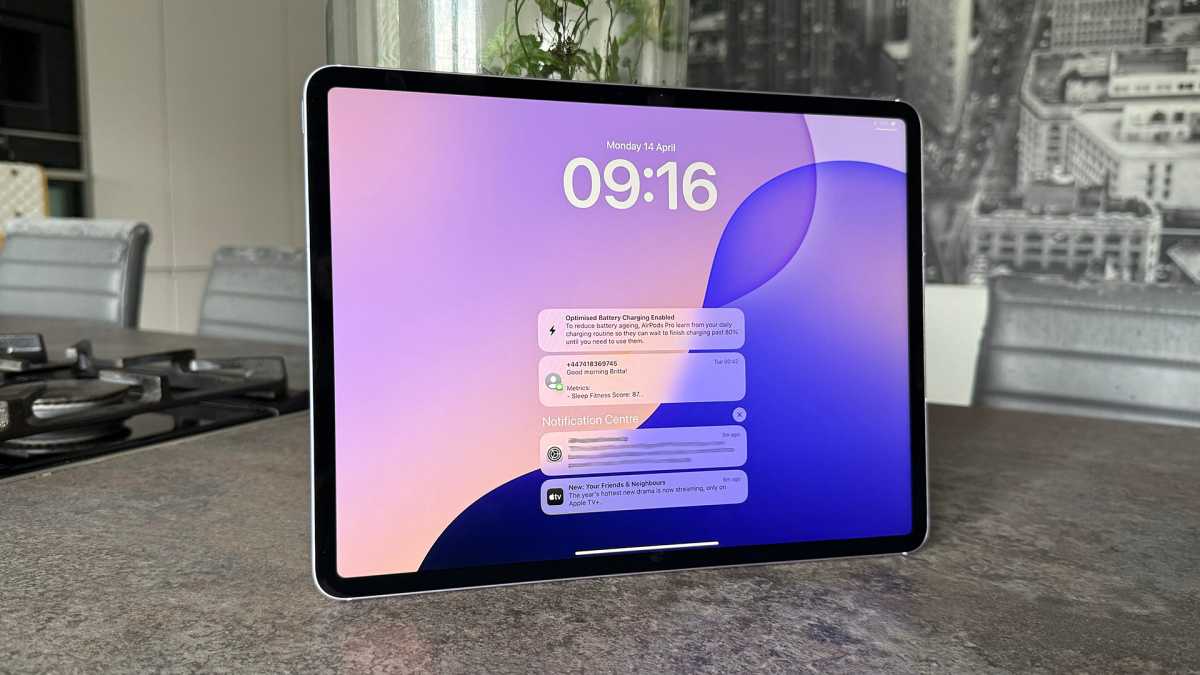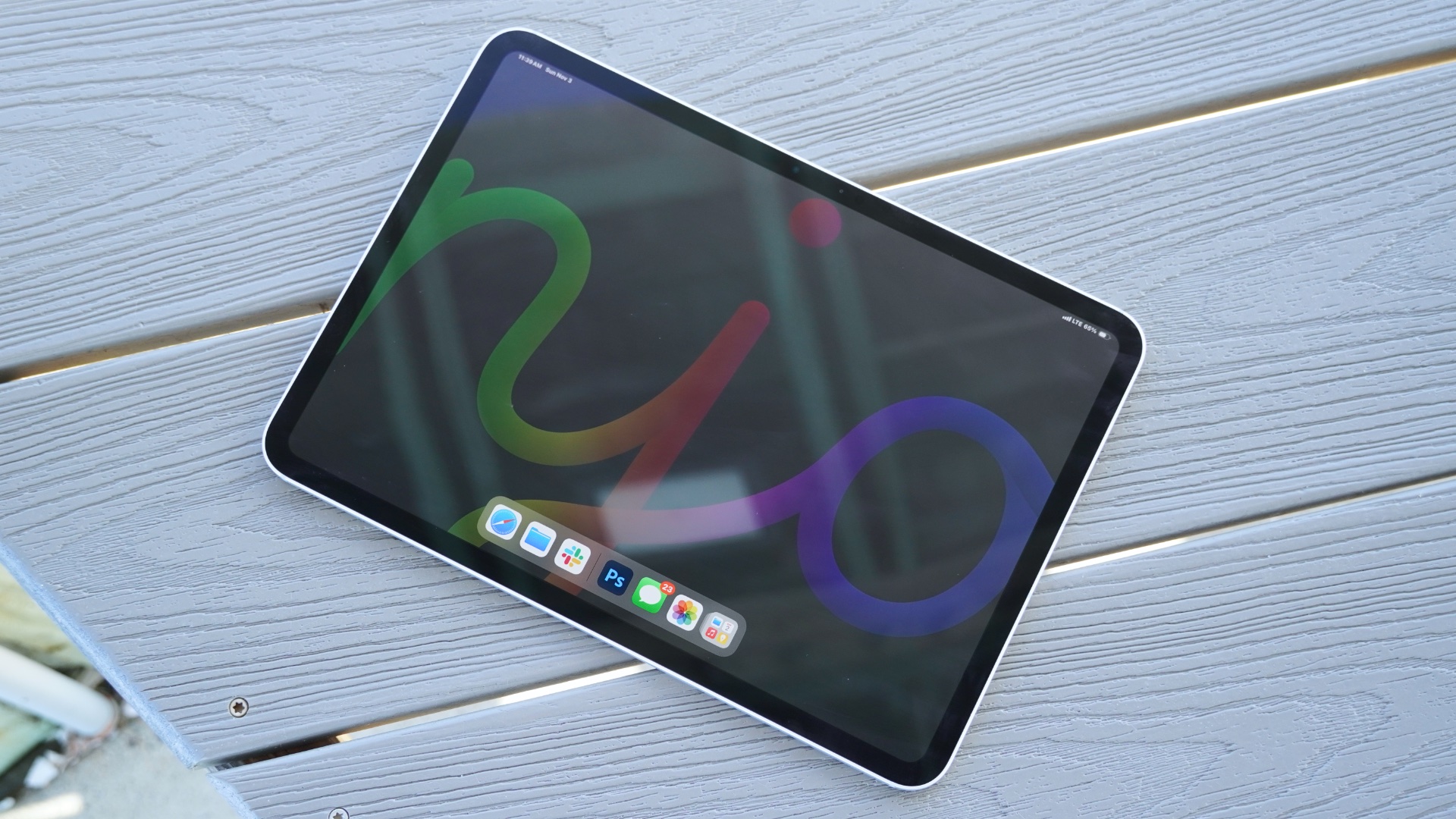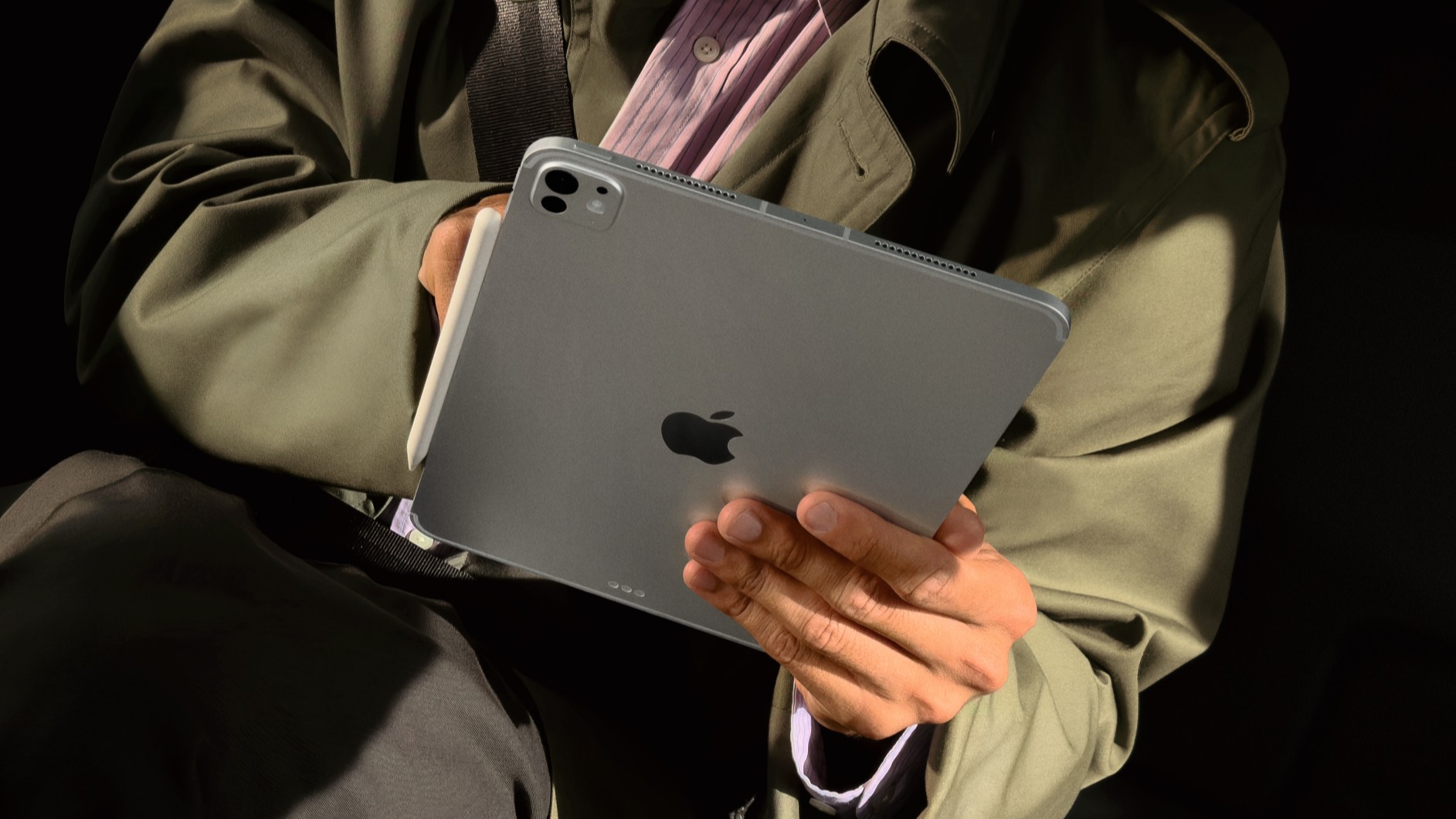It’s not quite right to say that for the first five years of its life, the iPad was an iPhone (or an iPod Touch) with a really big screen meant to be a lean-back consumption device. After all, the very first iPad shipped with a productivity accessory in the form of the Keyboard Dock.
But ten years ago, Apple got serious. It shipped the very first iPad Pro, and began a decade-long conversation about whether the iPad could be used for work and even whether or not it was a computer.
Today, the M5 iPad Pro and iPadOS 26 have settled a lot of old scores. But it’s been a long, strange journey from “Hey Siri” day in San Francisco to now.
A big screen and accessories
What made the original iPad Pro was its size and its collection of accessories. Though Apple would later add a smaller model, the first iPad Pro had a 12.9-inch diagonal screen, providing more space than ever before on an iOS device.
What can you do with all that space? Shortly before the iPad Pro shipped, Apple shipped iOS 9, which added iPad multitasking for the first time in the form of Slide Over and Split View. Yes, it would take a decade for Apple to toss that approach entirely away and start again with iPadOS 26, but the ability to run two iPad apps at once, on that big screen, was a big deal.
The other thing you can do with an iPad that’s bigger than ever before is attach a keyboard to it, and so Apple introduced the Smart Keyboard alongside the iPad Pro. By today’s standards, it was rudimentary–a thick multi-fold case with membrane keys and no trackpad. In fact, at the time, I felt that you’d be better off just using a case and a Bluetooth keyboard when you wanted to write on the iPad!
But the most important thing about the Smart Keyboard is that it existed. Its existence meant that Apple felt that toting around a keyboard and using an iPad as an almost-laptop was an endorsed use case. It mattered.
The other iPad Pro accessory introduced a decade ago was the Apple Pencil. Yes, today it’s easy to look at that original model (with its Lightning plug hidden underneath a cap!) and think about how far we’ve come. But the Apple Pencil was a game-changer. For years, artists had gravitated toward the iPad as a way to be freed from PC graphics tablets and work anywhere, at any time. This led to a cottage industry of styluses that tried to emulate the iPad’s finger-sensing touchscreen. They worked, to a degree, but it couldn’t be clearer that it was a use case Apple just didn’t endorse.

Thiago Trevisan/Foundry
The Apple Pencil changed everything. It allowed precision input on the iPad for the first time, with low latency. Not only were all the artists who had struggled to work on the iPad rewarded with a product designed just for them, but it also showed that Apple wanted the iPad to be used as a professional tool for those who make their living by holding a pencil (or equivalent).
I’m someone who hates writing by hand, but the Apple Pencil even changed how I work. That’s because the Pencil didn’t just support drawing, but (after a few software updates) supported driving the iPad’s entire interface. I discovered that I loved using the Apple Pencil to edit podcasts. Using thoughtful iPad apps like Ferrite Recording Studio made even an inveterate stylus-hater like me into a true believer. The Apple Pencil is a great way to drive all sorts of apps. There’s nothing like it on any of Apple’s other platforms–and it all started with the iPad Pro.
New sizes and changes
Over the years, the iPad Pro and its accessories have evolved in numerous ways. For the last five years, the Magic Keyboard has provided iPad users with not just a keyboard, but full-on mouse pointer support. (It’s hard to even remember the Mouse Wars, but there was a time when saying that a pointing device might be useful on an iPad was controversial!) The Apple Pencil has also gotten better, with magnetic on-device charging and improved precision.
And the iPad Pro itself has never been more impressive. Since the dawn of the Apple silicon era five years ago, it’s been powered by the same chips found on Macs. (You could argue that two special iPad Pro chips, the A12X and A12Z, were the testbed for the M series.) At this point, there’s no performance difference between a MacBook Air and an iPad Pro, because they generally run the same chips. And the tandem OLED iPad Pro display introduced in 2024 with the M4 model is legitimately the best display on any iPad, Mac, or iPhone, ever.
The biggest change in the iPad Pro over the last decade has probably been where it sits within the iPad product line. The original iPad Pro started at $799–pricey! Today’s large iPad Pro starts at $1299… but there’s another option.
The iPad Air is now basically what the iPad Pro used to be. (The large model even starts at the same price, $799.) The iPad Air supports the Apple Pencil Pro and a Magic Keyboard and offers a pretty great value… just without that OLED display with ProMotion, Face ID, ProMotion, and a few other niceties.

The iPad Air is for a different audience than the iPad Pro, but it supports Apple Pencil and can do a lot of the same things.
Britta O’Boyle
In a decade, the iPad product line has progressed to the point where the iPad Air can possess a load of features that debuted in the iPad Pro in a lower-priced, “mainstream” iPad. Meanwhile, the iPad Pro itself has shot into the stratosphere, with cutting-edge processors and an outrageously good display, not to mention the thinnest body in any Apple device ever.
Where the iPad Pro goes next is anyone’s guess, but it’s hard to deny that it’s changed the perception of what iPads are capable of. And thanks to the numerous multitasking upgrades in iPadOS 26, it feels like the iPad’s software has also embraced all the possibilities an iPad Pro offers.
It took a little too long, I think. But a decade on, it feels like today’s M5 iPad Pro is fulfilling the original model’s destiny.
Apple iPad Pro 11-inch (M5, 2025)

Apple iPad Pro 13-inch (M5, 2025)







